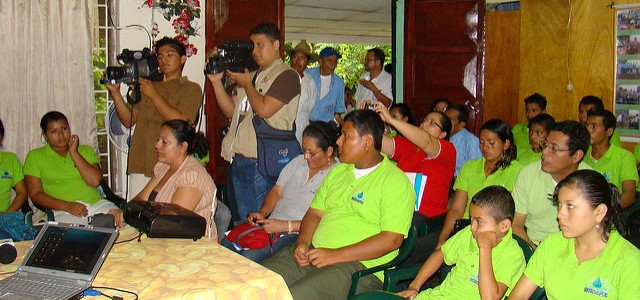Characteristics
Integrated water resource management requires data on a variety of issues, many of which are changing rapidly and are not easily specified in advance, e.g. climate change impacts on water demand. Decision Support Systems (DSSs) help with the acquisition and management of such data and are mainly used to solve unstructured or semi-structured decision problems. A DSS is often an interactive software which typically encompasses additional capabilities beyond the modelling framework, including tools for data and information management, socioeconomic evaluation tools, and an (interactive) communication framework for sharing and disseminating information to the public.
IWRM at the river basin level deals with many facets of water management, from striving for water security for all purposes in a sustainable and equitable manner, to being able to manage and mitigate disaster risks. This can be supported by a DSS by developing and adding generic tools, many of which water resources planners may already be acquainted with from their daily work, such as web publishing, multi criteria analysis, time series processing, simulation codes, Geographic Information Systems, scripting, or spread sheets.
DSSs have emerged in an attempt to make models more usable for water authorities, by building an information technology framework which is tailored to the requirements of the decision-making process and supports the workflow of authorities. A typical DSS for IWRM includes five main components: a data acquisition system; user-data-model interface; database; data analysis tools; and a set of interlinked models.
An example of a free DSS is WEAP (Water Evaluation and Planning). It follows the basic principle of water balance accounting and can be applied to municipal and agricultural systems, a single watershed or complex transboundary river basin systems. It includes a water balance database, a scenario generation tool, and a policy analysis tool. Its open setup allows for dynamic links to other models and software, such as MODFLOW which is especially helpful in modelling ground water flows.
Lessons learned
- Experience shows that the best approach is a straightforward and flexible DSS which is easy to access by stakeholders and thereby promotes inclusive planning. A DSS should assist, not substitute the user of the model.
- DSSs are most effective when there is a solid base of data to draw on. If data is collected from many different sources, homogenisation can become an issue.
- A DSS can help bridge the gap between scientists and policy makers and act as a catalyst of trans-disciplinary research.
- The usefulness of a DSS depends on design features such as its simplicity of use, data demand, suitability for a specific institution task and degree of documentation, training and support offered.
- In order to integrate multiple stakeholders and interest groups that are not water managers into the decision-making process, shared vision modelling (see C3.03) is more appropriate. Non-computer based models such as role playing games might also be successful.

